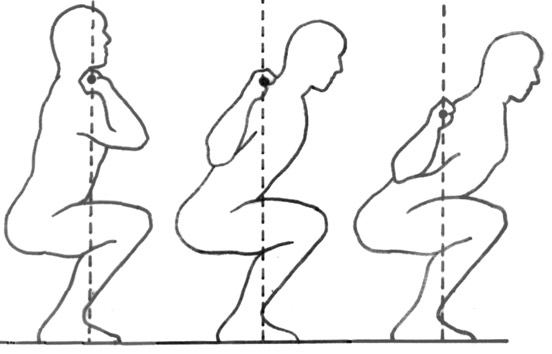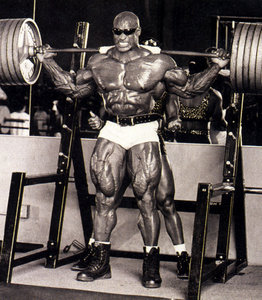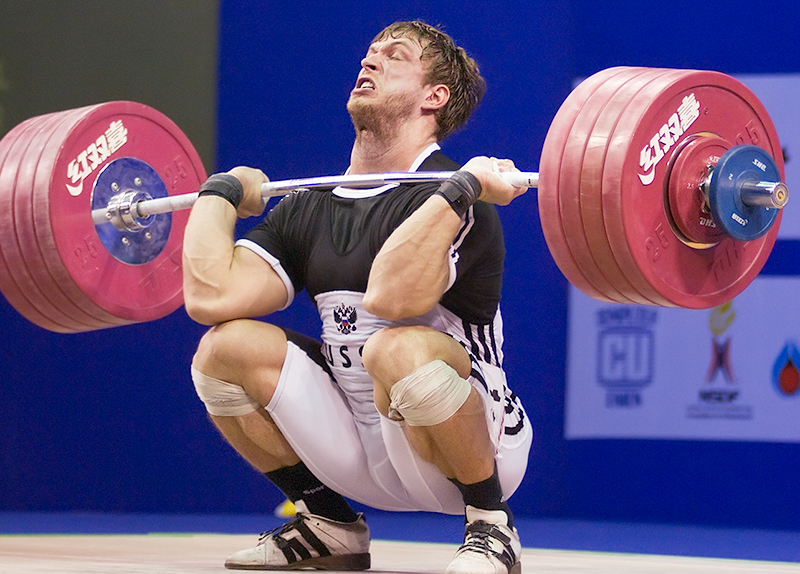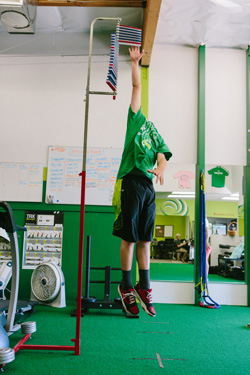Front Squat vs. Back Squat
The difference between the front squat and back squat. As promised, I will continue to answer myths and misconceptions of the different squat variations (with only a few tangents). For this installment, I will focus on the difference between the front squat and the back squat.
Front squats and Back Squats, what's the difference?
1.) Bar Positioning
The first and most obvious difference of the front and back squat is the positioning of the bar. During a front squat, the barbell will rest across your clavicles (your front side), while in a back squat, the bar will either rest across your upper traps (high bar position) or lower and mid traps (low bar position). The positioning of the bar in the back squat is based on personal preference.

2.) Muscle recruitment
As you could guess, muscle recruitment is slightly different between the front and back squat. As mentioned in battle of the squat part 1, having the bar rest on your back causes an anterior posterior translation of force in the knee. This is great for athletes since this forward translation increases strength within your ACL. The front squat does not cause as much displacement in the knee, decreasing the load on the ACL. For those fresh out of ACL rehab, starting with a front squat and progressing to the back squat would be a smart choice.
Most coaches think back squats are associated with greater muscle recruitment. However, a study by Gullett et al. 2009 found no significant difference in lower body muscle recruitment between the two squats. Contrary to popular belief, front squatting isn’t more effective at increasing the size of your quads. However, overall muscle activity was less in the front squat then back squat. Why? It is easier to withstand heavier loads in the back squat than the front squat. Heavier loads means greater muscle activity. As mentioned previously, engaging your lats during a squat stabilizes your spine. The bar positioning during a front squat decreases your ability to engage your lats, while arm positioning during the back squat allows them to be fully engaged (think about arm positioning during a lat pull down, hands wide you get the most muscle activation in your lats). This is all based upon positioning of your arms either flexed in front of you or adducted to the side.

Who should back squat and who should front squat?
To begin this section, I’d like to let you in on a little secret - I believe one of the best uses of the front squat is as a teaching tool. Hear me out; most people that back squat for the first time forget about the daily activity of sitting and standing. All of a sudden, they feel like they need to lean forward instead of sitting back. An easy way to fix this, and to fix it fast, is by having them front squat. It is nearly impossible to complete a front squat with your knees coming forward because your body won’t let you! There have been countless times in the gym where I’ve seen strangers attempting to squat, and I have taken the bar off their backs and put them in a front squat position. Their ugly squats magically got a whole lot better. It’s a beautiful trick that will work every time.
If you compete in Olympic lifting, or are working on your Olympic lifts, then you MUST front squat. It’s as simple as that. You catch the bar in the front squat position! If this doesn’t make sense empty the bar and try something else.

If you have shoulder mobility issues, be careful with the back squat. I have been lucky enough to work with a lot of baseball players here in San Diego. It is common knowledge that most baseball players have some sort of shoulder pathogology, whether it is symptomatic or not. At times, unnatural stresses show where the issues lie. If you work with baseball players and have them back squat, you will quickly notice that some just can’t back squat. Baseball players with shoulder mobility issues are unable to do back squats because the hand and shoulder positioning during the back squat places a lot of stress on the anterior components of the shoulder. You will quickly hear complaints of shoulders hurting or even arms going numb. Instead of being hard headed and making them continue to squat, simply change the positioning of the bar. Have them front squat, or break out the dumbbells. When front squatting, be sure to have them squat with their arms extended in front and not in the racked positions. The racked position puts a lot of extra strain on the wrists and a baseball players is nothing with a bad wrist or band hand. It is your goal to keep them on the field, and make them a better baseball player - not to take unnecessary risks that could potentially injure them.
Back Squatting or Front Squatting for Athletes
Choosing between a back squat and front squat for your athlete could sometimes be difficult. There is a time and a place for both, however, all sports have slightly different demands. Ultimately, the demand of the sport will dictate the choice of squat. In terms of overall sprint speed, both the back squat and front squat should be used. Each phase of a sprint places a different demand on the body. Acceleration relies particularly on the amount of muscle mass that can be activated to increase power output. It has been noted that the most effective way to improve acceleration is through both horizontal and vertical impulses – enter, the back squat. However, during maximal velocity sprinting there is a greater demand on vertical impulse, and eccentric firing of the hip extensors. Research has shown front squatting produces a great hip flexor moment versus the back squat. In other words back squatting has the potential to be more beneficial when training acceleration and the front squat may be more beneficial when it comes to training top end speed, and improving velocity.

Final Verdict
It is unfair to say the back squat is superior to the front squat, and vice versa. The benefit of squatting technique is dependent on your training goals - if you are a power lifter then you will back squat and if you compete in the Olympic lifts (true power lifting) then you will front squat. Both will make you faster, both will make you stronger, both will cause an acute increase in anabolic hormone production, and both will pack on the size in your legs hips and back. Moral of the story, both variations are tremendous exercises. If aren’t already squatting, start including them into your weekly exercise program now!


